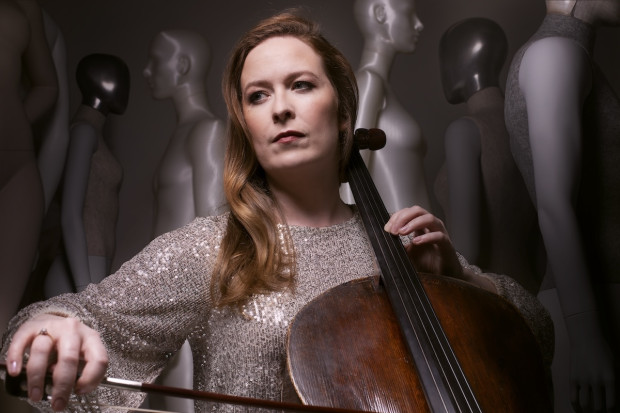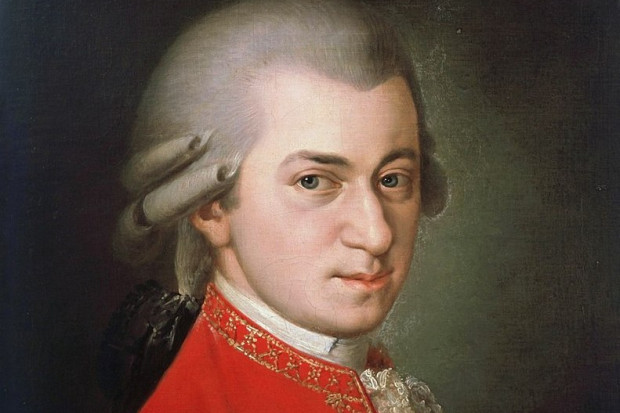
Silenced by Sound
Silenced by Sound
Kao-tai is a mandarin from tenth-century China who finds himself transported by time machine to twentieth-century Munich. In Herbert Rosendorfer’s novel Letters Back to Ancient China, Kao-tai keeps his friend and fellow mandarin, Dji-gu, informed of the changes that await humanity in the next millennium. His reports are not happy. He notes that the people he meets, the ‘bignoses’, do not fight, but they bellow all the time. The roads are filled with roaring, grinding, rattling iron carriages. Kao-tai concludes sadly in one letter to Dji-gu, ‘Dirt and noise, that is what dominates life here, that is the abyss to which our future leads.’
If Kao-Tai had been transported to any twenty-first century urban centre his conclusions would doubtless have been equally unhappy. And he might have wondered too about an abyss that resonated to the sound of music. For today’s Western society is as much about amplification as emancipation. It is a feature of developed societies that as income levels rise so do noise levels. The noise is characteristically that of technology in its various forms, which, from steam engines and satanic mills to chainsaws and car alarms, has colonised much of our aural space. Technology both generates noise and sustains it through the power of reproduction and amplification. Music is, of course, a form of noise and, thanks to the technical, is a constant, unavoidable presence in our lives. Shops, pubs, cafés, waiting rooms, hair salons, airports, indeed almost any available public space, are saturated with music. If we want to chart change in society, we need not so much pictures as a soundtrack. And yet, though there are occasional debates about whether our radios should have more music and less talk or more talk and less music and what kinds of music we should teach in our schools or review in our newspapers, the overwhelming fact of the existence of music in our public lives goes unnoticed and unanalysed.
One question that might be asked is why does society now need so much music – from the incessant ‘classic hits’ on the airwaves to the in-store Vivaldi punctuated by special offers and summonses to the check-out? One answer lies in the nature of the society in which we now find ourselves. Richard Sennett, in The Corrosion of Character (1998), his analysis of the personal consequences of work in the new economy, wonders what kind of present and future are offered by the Anglo-American model of flexible capitalism: ‘How do we decide what is of lasting value in ourselves in a society which is impatient, which focuses on the immediate moment? How can long-term goals be pursued in an economy devoted to the short term? How can mutual loyalties and commitments be sustained in institutions which are constantly breaking apart or continually being redesigned?’
If we add to the uncertainties of the workplace the threats to our ecological well-being and the much-reported meanness of our streets, then the external environment can be perceived as increasingly hostile. Music in its public (loudspeakers) or private (walkman) form becomes a way of erecting a barrier between the self and the outside. Volume control is just that. Using volume as a way of controlling the uncontrollable, whether it be the random violence of criminal assault or economic redundancy. In a period of accelerated change, the relentless predictability of taped music is seen less as another form of unprovoked (aural) aggression than as consoling and reassuring in its thump-thump sameness. The loudness of contemporary society is eloquent in its way of expressing countless silent fears. As individuals and societies become increasingly unsure of their ends, and are wholly devoted to augmenting their means, then music becomes both a barrier and a comforter.
An immediate effect of the pub sound system or the stereo disc compact player is to make conversation difficult, if not impossible. What is needed is action not interaction and the most valued action in the new economy (because the most valuable) is consumption. Music, by distracting the listener from any distraction, means all attention can be focused on buying the runners or getting out of your head. Although music has traditionally been a communal activity in its performance (the band, the orchestra) and reception (the concert hall, the school disco), music is more and more a way of confining humans to individual, monadic worlds where communication runs the risk of being as worthless as it is wordless. It is almost as if as automation empties the everyday lifeworld of human contact and thus generates more solitude, our public spaces are flooded with music to deal with the anxiety and fretfulness of the solitary consumer. For the lone rangers of late modernity more music means less talk, but because there is less talk, there must be more and more music to hide the fact that there is less and less talk. Silence is generally not music to the ears of business as if a silent public space is an affront to the privateers of privatisation with their desire to turn sounds into cents. The question is how long the sanctuaries of silence – churches, public parks, graveyards, libraries – can survive the relentless assault of piped, prepaid sound. To this extent, there is a market logic that both annihilates silence in the pursuit of profit and promotes silence as a positional good for the affluent. By positional good is meant that the fewer people possess the good, the greater the value of the good. So, tourist destinations are promoted for their calm, tranquillity, and peacefulness. The empty beaches and the green fields promise respite from noise. The property supplements intimate that the right price tag will bring you privacy and seclusion where you are neither overlooked nor overheard. The same economic forces which funnel music, at a price, into the consuming spaces of our society, and usurp our right to silence, then extract profits from the desire to temporarily (holiday) or permanently (property) escape the noisy tyranny of these selfsame spaces.
A French cartoonist, Batelier, had a popular cartoon showing a dark, helmeted motorcyclist with an enormous cloud of smoke coming from his exhaust pipe. Written in bold letters across the cloud was the angry affirmation, ‘J’existe!’ The size of the cloud suggested the macho roar of the engine with the silencer removed. The boom years have indeed been a Boom-Boom time for all. Like Batelier’s uneasy rider, the proof of our existence is by raising the volume levels and leaving as much collective space as possible as a sound box for the primal scream of capital (‘We’ve made it!’). The Celtic Cats pounding the perimeter fences of our urban zoos do so to the sound of music just as the tracksuited armies of the health and leisure clubs work out to the drum-roll of decibels and dividends. The continuous soundtrack is not only, of course, the roisterous anxiety of a small country that finally feels it is being heard in the concert of nations, but relates to a larger worry of modernity about endings as opposed to ends. By this, we mean the morbid fear of death, the thanatophobia which informs much of modern prudishness about the fact of death and our personal ending. Night and silence are the stock images associated with death, from the Gothic novel to the interminable seconds of suspense before blood flows in the hammer horror movie. So although the occasion of death has inspired in the requiem some of the most accomplished and thought-provoking music in the Western tradition, the all-pervasiveness of music in our lives could be seen as the nervous whistling of a modernity that seeks to banish the terrors of the graveyard into an inaudible space. Silencing the sound of silence, a silence seen as synonymous with death, becomes an imperative.
So should musicians and music lovers be concerned about the uses to which music is put? Answering the question also involves answering the question as to what society thinks music should be doing. Jamie James, in his The Music of the Spheres: Music, Science and the Natural Order of the Universe, notes the following: ‘It is a recent notion that music is a divertissement to be enjoyed in comfortable surroundings at the end of the day, far removed from the hurly-burly of life’s business; throughout most of the history of our culture, music was itself an essential part of life’s business. Its ability to give pleasure was deemed to be not only the least of its attributes but even a perversion of its true purpose.’
What James has in mind are the private spaces of the discerning bourgeois, and the kind of music he sees as typically filling those spaces is Romantic, ‘the music we were all taught to define as the great music – the symphonies of the nineteenth-century Middle European composers, Italian and German opera of the same period.’ Underlying the vogue for Romanticism, with its emphasis on emotional expressiveneness and anthropocentric subject matter, is a variation on the two-cultures rift. In the modern age, ‘it is a basic assumption that music appeals directly to the soul (which has been called by many names – sensibility, temperament, the emotions, among others) and bypasses the brain altogether, while science operates in just the reverse fashion, confining itself to the realm of pure ratiocination and having no contact at all with the soul.’ Hence the complete dominance of the Romantic repertoire on classical music stations and the setting to music of the ‘hurly-burly’ of public retailing and relaxation. If music is associated with divertissement, then where there is music, everybody is having a good time. And more importantly, if music is equated to the absence of thought, then nobody need think too hard about what it means to have a good time and why they should pay so much for it. In addition, as recent debates in this magazine have demonstrated, a society is not going to be greatly exercised about the state and standards of its musical education if music is seen primarily as a vehicle for soulful mindlessness.
In trying to decide how to respond to the uses and abuses of music one recurrent difficulty is that for the listener music is a relation, not a substance. In other words, the reaction of any listener to a piece of music is based on how the piece relates to prior knowledge, prejudices and predisposition. Noise is always music we dislike. And this fact, that people relate very differently to different kinds of music, makes discussions on the invasive presence of music in our lives problematic. The perennial danger is the opinionated petulance of the bar stool crank or the irascible taxi driver who sees the entire history of modernity as a conspiracy by rowdy youngsters to violate all that is sacred. There is a case to be made, however, for a recognition of aural space as just as much of a political and aesthetic concern as physical space has been for the geographers and troops of the territorial state.
Music, by definition, emerges out of silence. It is constituted like all forms of identity as much by what it is not as by what it is. A Bach cello suite, like The Strokes’ ‘Is This It’, needs some prior condition of silence if it is to be perceived in its distinctiveness. Remove silence and the nature of music itself is irrevocably altered. One of the crueller ironies of piped music is that it undermines the very forms of music it would seem to promote, whether it be mainstream popular music or ‘light classical’. Without the necessary punctuation of silence, allowing the music to be sensed as different and appreciated, the music becomes an indistinct continuum, stripped of power and identity. Thus, the engorgement of so much of public space by piped, pre-recorded, or ‘Classic Hits’ style music should be as much a political issue for those concerned about the future of music as concerns about government funding, the availability of performing spaces or the attitudes of our educationalists. In a sense, one of the greatest dangers to music may be coming from music itself. The unwanted, intrusive and manipulative use of music by the hidden (but not unheard) persuaders of the market economy constitutes a sustained assault on musical creation and reception, whatever the musical genre.
In recent years, for example in On Biocultural Diversity (2001), it has become common to talk about cultural ecology, the preservation of cultural diversity alongside the defence of the biological diversity of the planet. The term ‘linguasphere’ has been coined to parallel the notion of ‘biosphere’ and is used to refer to the collective language communication space of humankind (see David Dalby’s 2000 article on ‘The Linguasphere’ in The Linguist). Debates around cultural ecology have to date largely centred on the world’s languages, many of which are in danger of imminent extinction. However, a comprehensive cultural ecology must take in culture in all its aspects, one of which is, crucially, music. In doing so, we could begin to concern ourselves with what we might call the melosphere – the collective musical space of humanity – and how in each society the distinctiveness and integrity of that melosphere is threatened by the commercial rezoning of aural space for the profit of the few. If we do not begin to act on the preservation of our melosphere we may indeed find the future, in Kao-tai’s words, leading us to an abyss where we will long hopelessly for a great silence.
Published on 1 November 2002
Michael Cronin holds a Personal Chair in the Faculty of Humanities and Social Sciences, Dublin City University. His latest book is Translation goes to the Movies, published by Routledge.

















